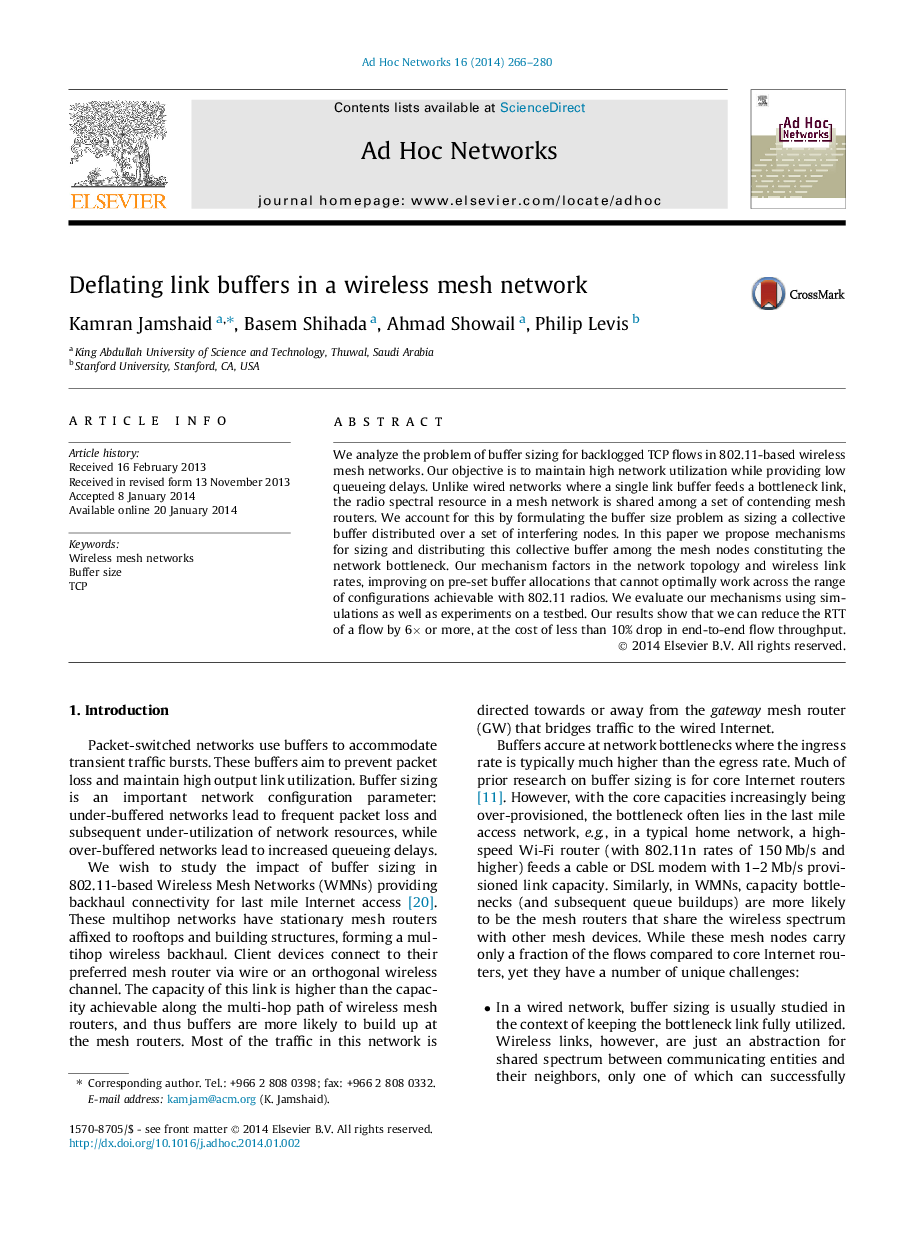| Article ID | Journal | Published Year | Pages | File Type |
|---|---|---|---|---|
| 444487 | Ad Hoc Networks | 2014 | 15 Pages |
Abstract
We analyze the problem of buffer sizing for backlogged TCP flows in 802.11-based wireless mesh networks. Our objective is to maintain high network utilization while providing low queueing delays. Unlike wired networks where a single link buffer feeds a bottleneck link, the radio spectral resource in a mesh network is shared among a set of contending mesh routers. We account for this by formulating the buffer size problem as sizing a collective buffer distributed over a set of interfering nodes. In this paper we propose mechanisms for sizing and distributing this collective buffer among the mesh nodes constituting the network bottleneck. Our mechanism factors in the network topology and wireless link rates, improving on pre-set buffer allocations that cannot optimally work across the range of configurations achievable with 802.11 radios. We evaluate our mechanisms using simulations as well as experiments on a testbed. Our results show that we can reduce the RTT of a flow by 6Ã or more, at the cost of less than 10% drop in end-to-end flow throughput.
Keywords
Related Topics
Physical Sciences and Engineering
Computer Science
Computer Networks and Communications
Authors
Kamran Jamshaid, Basem Shihada, Ahmad Showail, Philip Levis,
